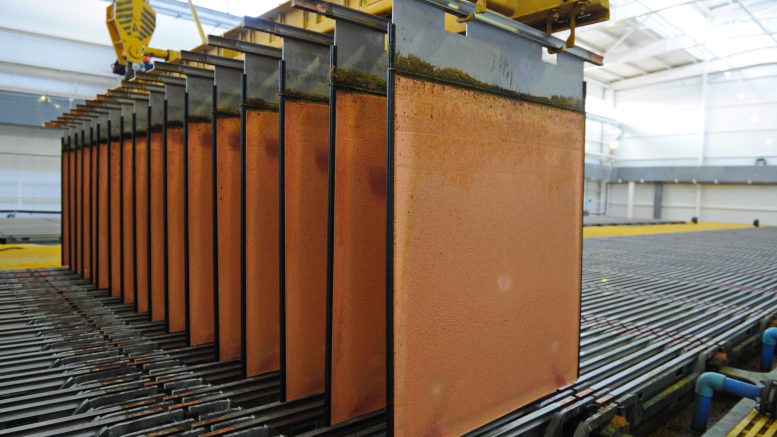Turn your mind back six months ago to January 2023.
Markets were in a frenzy predicting enormous growth in Asia as China emerged from its three-year lockdown. Commodity stocks were pounding into new highs. Lithium had just soared to an all-time high.
The sleeping tiger was awakening and global markets were ready to embrace it after a year of pain in U.S. and European markets.
But the outlook was quickly deflated.
Rather than explode back to life, this sleeping tiger continues to stumble its way out of a three-year coma, failing to meet the high expectations from abroad.
In April, Chinese industrial production rose by 5.6% year-on-year. That fell well short of economists’ expectations of 10.9%. But is that really a surprise?
We’re talking here about a $16-trillion economy, the second largest in the world. You could say these strong expectations were a little overzealous. Giants take time to move and this is what’s happening in the Chinese economy.
Yet, despite that, the People’s Bank of China (PBOC) seems ready to push growth up a notch.
In June, authorities made sweeping announcements that could breathe new life into the 2023 China reopening story.
The first of those was a cut in the central banks seven-day reverse repurchase (repo) rate by 10 basis points from 2% to 1.9%. Effectively, a cut will filter down to commercial and private borrowers helping to prop up the weakened property sector.
This was the first time in 10 months the PBOC cut rates.
China’s central bank also lowered the interest rate on its standing lending facility (SLF) cutting the overnight rate by 10 basis points to 2.75% while injecting 2 billion yuan (US$280 million) through its short-term bond instrument.
So far, the market has fallen flat on the news. Not surprising.
After a false start earlier in the year, investors have lost their patience. But that could be a lost opportunity — potentially missing out on the REAL reopening of the Chinese economy.
As Bloomberg highlighted in mid-June, these latest stimulus announcements could mark a new beginning for the Chinese economy. The stage is now set for much broader stimulus as the government looks set to tackle deflationary fears with new vigour.
That’s certainly sparking interest in one area of the economy: copper.
Having bounced to the upside by around 7.5% in the last two weeks, copper futures continue to consolidate above their May low. But for certain copper producers, the ‘bounce’ has been far stronger.
Is copper staging a comeback?
Focusing on the majors, there’s good reason to believe a recovery in the copper sector is already underway.
The London-listed US$60-billion Swiss giant Glencore (LSE: GLEN), accelerated 15% in early June, while the Northern American-owned pure copper miners Ivanhoe Mines (TSX: IVN) and Southern Copper (NYSE: SCCO), jumped 26% and 11%, respectively, from their May lows.
The recent activity among these producers aligns with projections from the International Copper Study Group (ICSG), which predicted copper supply deficits BEFORE the end of 2023.
According to the research group supply deficit of around 114,000 million tonnes is expected later this year. That compares to a surplus of about 155,000 million tonnes forecast in October last year.
The reason for this surprise deficit? Higher than expected consumption in China. Again, not something most analysts would expect given the lacklustre growth in 2023.
Yet with the latest stimulus announcements deficits look much more likely.
Given that copper prices were deteriorating all through April and May, the ICSG’s forecasts were highly contrarian going against the grain of mainstream sentiment.
That’s because the ICSG is one of the few firms closely monitoring Chinese demand for copper. Again,, demand here continues to beat expectations.
Adding large-cap copper producers on the back of ICSG’s analysis would have seen investors pick up some tidy gains. So, is it too late to capitalize on the emerging recovery?
Given we’ve already seen strong double-digit gains amongst some of the world’s largest copper producers I expect this trend to move quickly.
For the most part, explorers and developers have moved little. Right now, that’s where I see the value.
— This column was previously published in Livewiremarkets.com.
James Cooper is a former exploration geologist turned mining analyst. He’s worked for major and junior companies throughout Australia and Africa, including Barrick Gold, Equinox Minerals, Crosslands Resources, and Northern Star and has been involved with all phases of exploration across a host of different commodities. Based in Melbourne, he’s now the resident commodities analyst at Fat Tail Investment Research and editor for the Diggers & Drillers Publication.





Be the first to comment on "China lights a fuse under the copper producers"